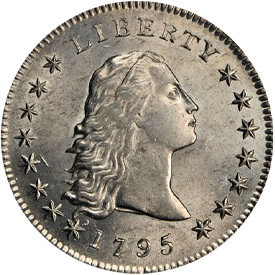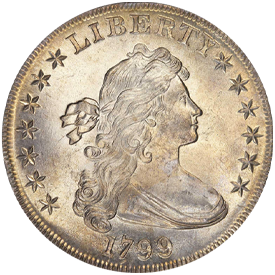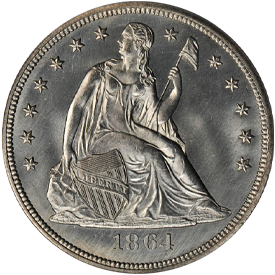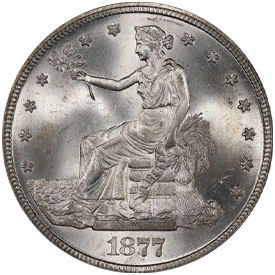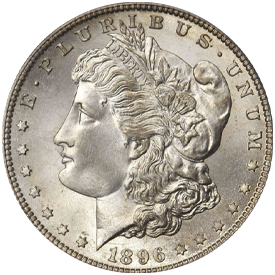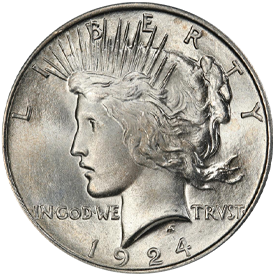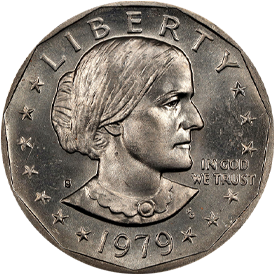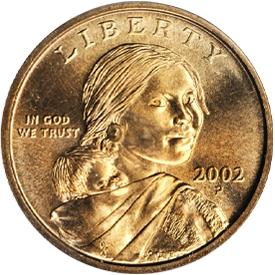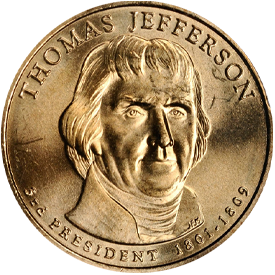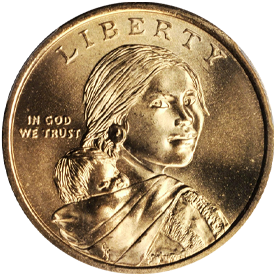The one dollar coin has had an interesting history, marked by several long suspensions in production as well as plenty of politics. Production began in 1794 with a tiny issue of only 1,758 pieces with the Flowing Hair design, and coins from this inaugural run are among the most coveted and valuable in U.S. numismatics. The Draped Bust design followed in 1795 and continued until 1803 at which point production was effectively suspended for 37 years. Trial pieces and patterns were made between 1836 and 1839 and even a few pieces were struck for circulation, but the quantities were insignificant.
Regular production resumed in 1840 with Christian Gobrecht’s Liberty Seated design, and continued through 1873 at which point the coinage of silver dollars for domestic use was again suspended for a time. The passage of the Bland-Allison Act in late February 1878 (pushed by the western silver mining interests and passed by Congress over President Hayes’ veto) required the U.S. Treasury to purchase between $2 and $4 million worth of silver each month to be minted into silver dollars.
As a consequence, many millions of silver dollars with George Morgan’s design were made during the 1880s and 1890s, far more than needed for circulation use. While popular in the west, the silver dollar was considered too heavy and bulky for use by easterners, and as a result, many millions of the coins sat in the vaults of the U.S. Treasury for decades. During the 1960s and 1970s, nearly all of these were released into the market, providing numismatists with copious quantities of uncirculated coins nearly a century old. Their high supply and relatively low price has resulted in the Morgan Dollar being one of the most popular and widely-collected coins on the numismatic scene today.
Production was again suspended in 1904, and did not resume again until 1921. After striking nearly 87 million coins with the older Morgan design, a new design by Anthony de Francisci commemorating the peace following World War I was introduced, and struck through 1935.
Another 35-year hiatus followed, at which time a new copper-nickel dollar coin bearing the likeness of President Dwight Eisenhower began in 1971. Unfortunately, this coin failed to circulated widely and most found use in Las Vegas casinos. A series of “smaller” dollar coins has followed, including the Susan B. Anthony, the Sacagawea, the Presidential, Native American, and American Innovation series, but none of these has achieved widespread circulation. As long as the Treasury continues to print paper dollars, a coin will have an uphill battle achieving widespread acceptance in commerce.
There are several key dates in the silver dollar series, including the 1794, the 1804 (made as a restrike for presentation sets and collectors during the 1830s and 1850s), 1851, 1852, 1870-S and the 1873-CC. Among Morgan Dollars, many are condition rarities, being rather common in circulated condition but quite rare in gem Uncirculated grades. These include the 1879-CC, 1884-S, 1886-O, 1889-CC, 1892-S, 1893-O, 1893-S, 1895-O, 1896-O and the 1901. The 1895 Proof-only issue is also high on the list of Morgan Dollar rarities.
Among the Peace dollars, most “S” mint coins are quite rare in ultra-high grade, as are most of the issues of 1927 and 1928. Again, in lower grade these are not terribly rare, but gems are in very high demand from the collecting community.
